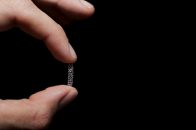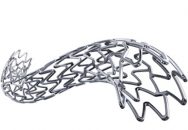Courtesy of the SBHCI. Bioprosthetic surgically-implanted valves degenerate over time, while patients become too old and are at high risk for reoperation. Transcatheter aortic valve implantation inside a deteriorated surgically-implanted valve (a valve-in-valve procedure) is an emerging alternative. The VIVA trial was designed to offer systematic and prospective data from patients treated with…
Mitral Valve Global Registry: transcatheter mitral valve replacement due to native valve disease
Courtesy of the SBHCI. The risk of surgical mitral valve replacement in patients with significant annular calcification is very high. There are isolated reports of transcatheter mitral valve replacement with balloon-expandable valve in this patient population. In consequence, this multicenter registry tries to concentrate information and analyzes the outcomes a year after the procedure. …
Leaders Free ACS: Good Results for the Polymer-Free Stent at 2 Years in ACS
Courtesy of the SBHCI. Guidelines recommend dual antiplatelet therapy for a year in patients admitted with coronary acute syndrome. However, patients at high risk for bleeding who receive coronary angioplasty have been historically excluded from studies. The new polymer-free stent BioFreedom allows for the reduction of dual antiplatelet therapy time, due to rapid drug elution…
EVOLVE II: Diabetes Substudy: Results at 3 Years after the SYNERGY Stent in Diabetics
Courtesy of SBHCI Diabetic patients have worse evolution after coronary PCI. Drug eluting stents with bioresorbable polymers were designed to facilitate arterial healing, and reduce inflammation and late and very late thrombosis risk. This sub-study of diabetic EVOLVE II patients presents the 3 year outcomes of the SYNERGY stent. The EVOLVE II included…
CENTERA: Results of the New Self-Expandable Valve
This new device offers the advantage of a lower frame height, which reduces the chance of coronary occlusion. The delivery system is totally motorized and the valve can be repositioned. In addition, the sheath is “14 F” for all valve sizes (23, 26 and 29mm). 203 patients were included, all with severe aortic stenosis…
ARTE: Aspirin or Aspirin and Clopidogrel after TAVR?
Courtesy of SBHCI. This study presented at Euro PCR and simultaneously published by JACC Cardiovascular Interventions poses a question that has remained unanswered since the start of TAVR. There is little information on the optimal antithrombotic therapy after transcatheter aortic valve replacement (TAVR). In general, patients receive between 1 and 6 months of dual…





